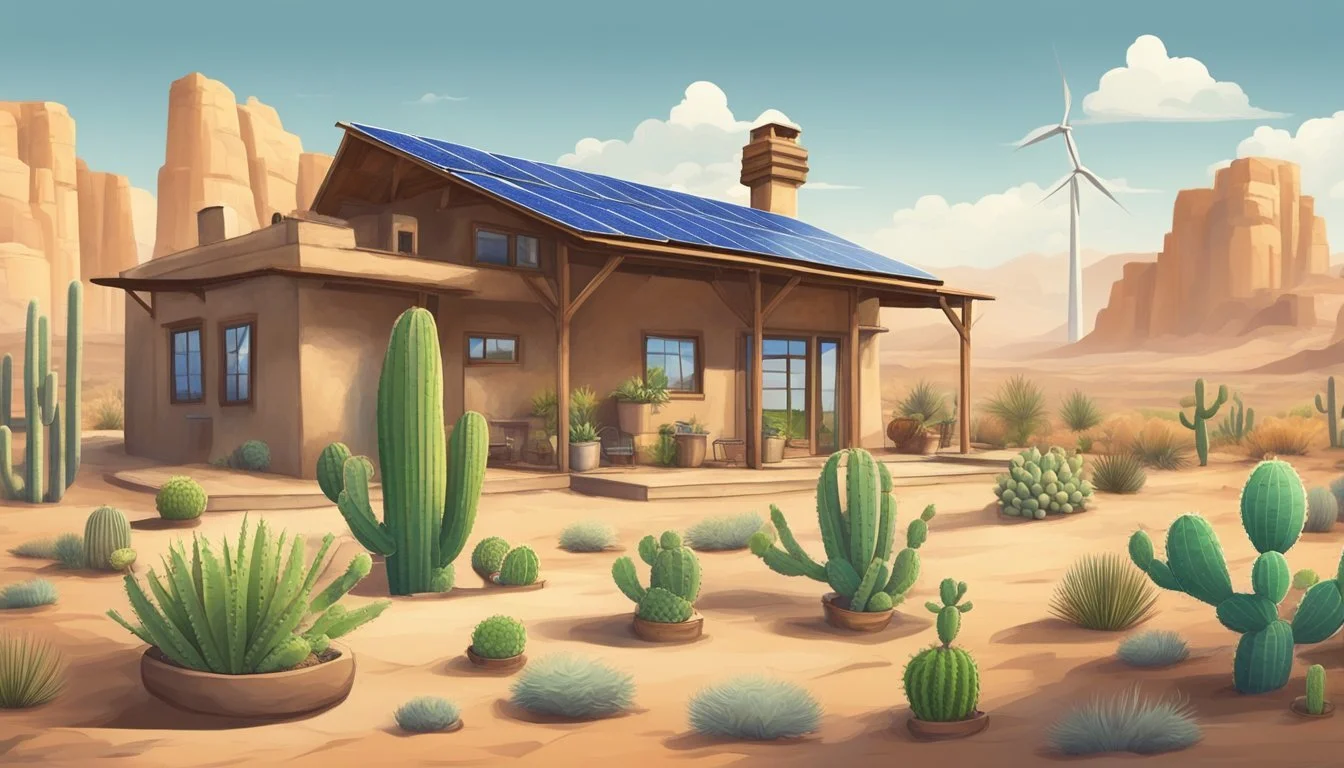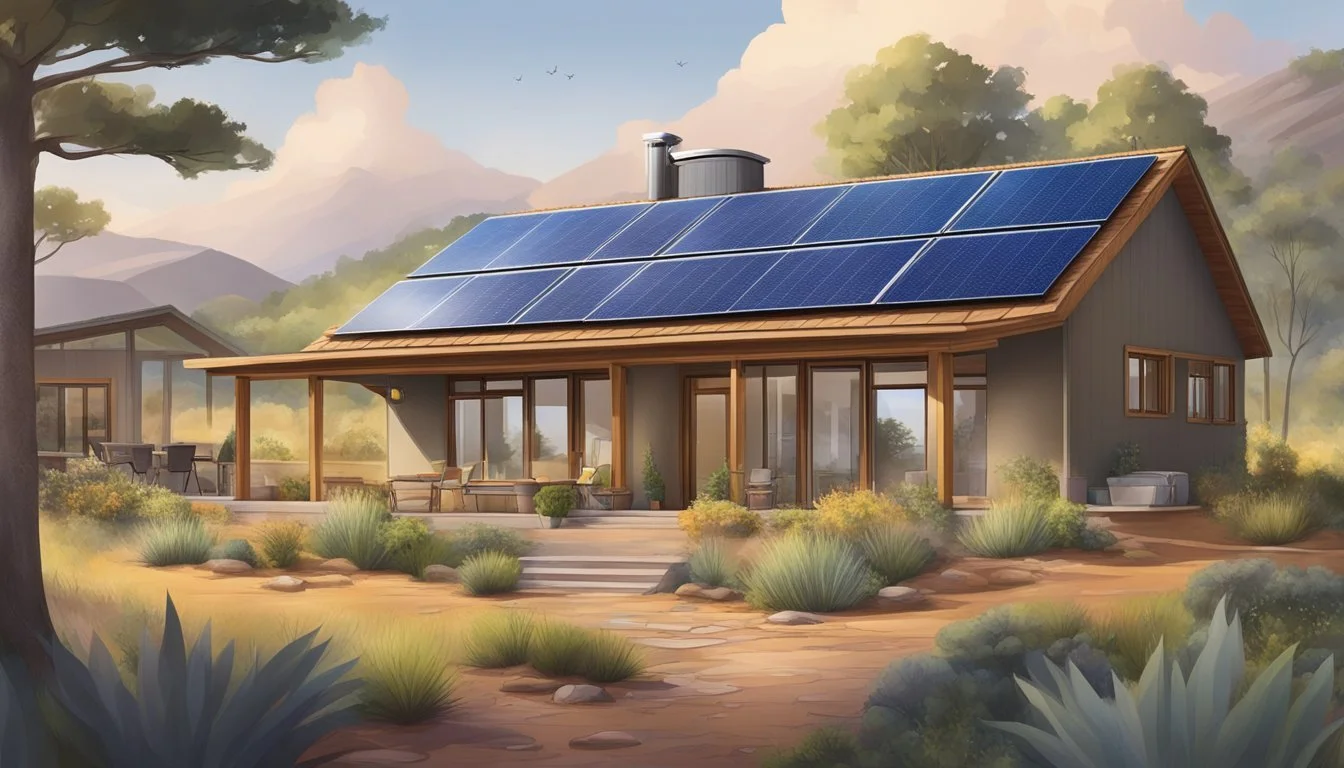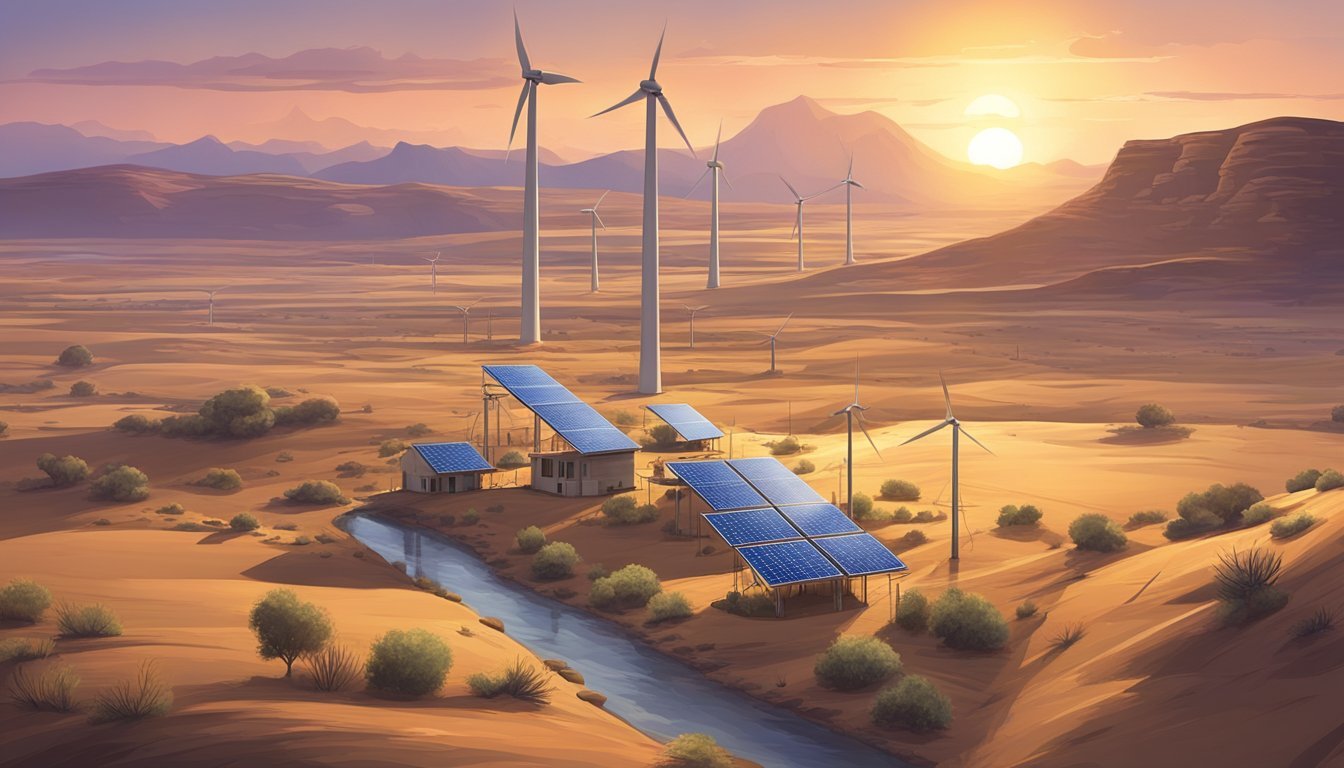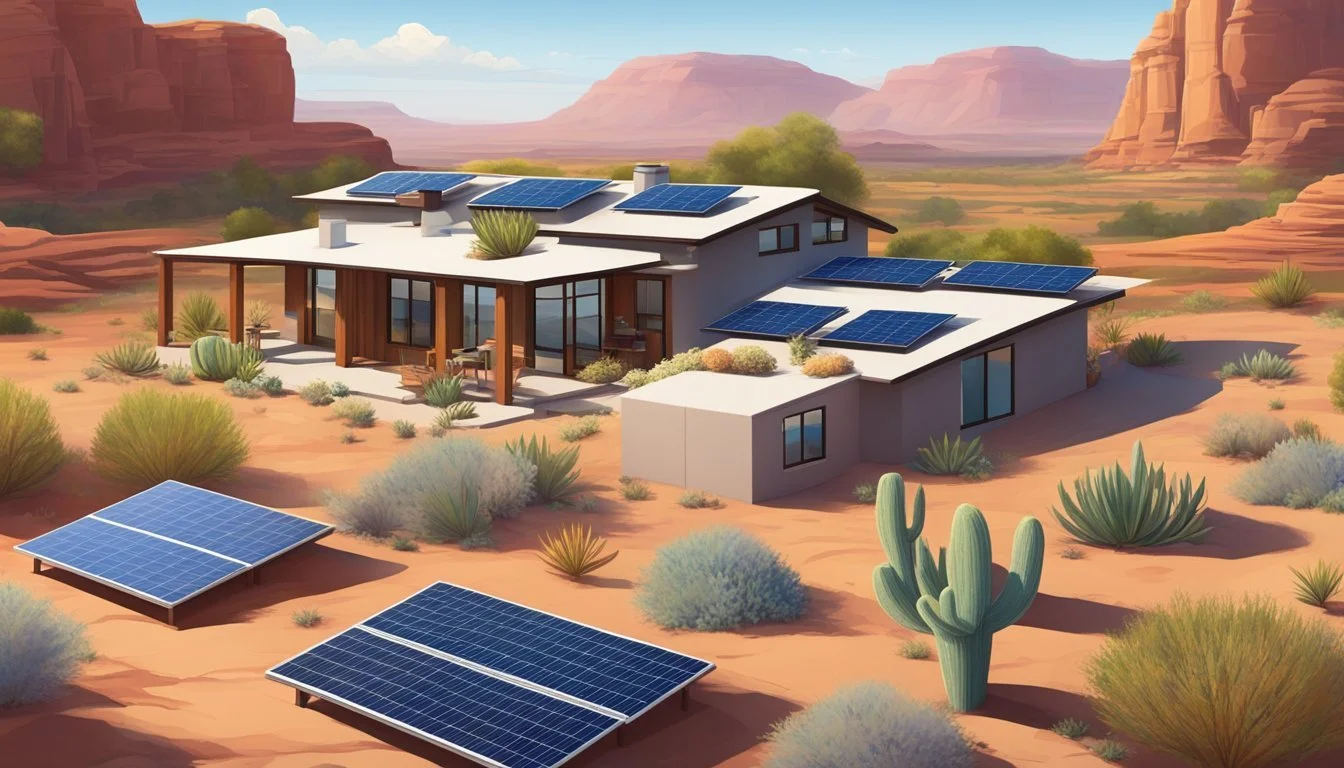Southwest Plateau Off Grid Living
Sustainable Independence in Remote Areas
The allure of off-grid living has captivated many seeking a life of freedom and independence. On the Southwest Plateau, this way of life is exemplified by its vast, open spaces where nature reigns supreme. This region offers a unique blend of boundless landscapes and minimal zoning regulations, making it an ideal setting for those wanting to break free from conventional living.
Living off the grid on the Southwest Plateau provides a sustainable, self-sufficient lifestyle amid stunning natural beauty. Communities in this area are increasingly adopting solar power and rainwater harvesting to meet their needs. The plateau's expansive terrain allows for ample privacy, while the lack of strict building codes offers greater flexibility in designing one’s off-grid home.
For those seeking a close-knit community, areas like Terlingua in West Texas have become hotspots for off-grid living. This balance of seclusion and communal support is perfect for those who value both independence and a sense of belonging. Embracing life on the Southwest Plateau means cultivating a harmonious relationship with the environment while enjoying the freedom of self-reliance.
Understanding Off-Grid Living
Off-grid living encompasses creating a self-sustaining lifestyle that operates independently of municipal utilities. This involves careful planning, significant initial investments, and a commitment to maintaining self-sufficient systems.
Concepts and Benefits
Off the grid living primarily relies on renewable energy sources such as solar panels or wind turbines. It minimizes dependency on fossil fuels, thus contributing to environmental sustainability. Families and individuals harness readily available natural resources to power their homes.
Self-sufficiency is another core aspect. Harvesting rainwater, growing food, and composting waste are common practices. These not only reduce the carbon footprint but also enhance self-reliance by enabling residents to handle their water, food, and waste needs without external aid.
Additionally, sustainable living often results in financial freedom over time. Despite initial costs, generating your own electricity and managing water resources can significantly reduce utility bills. Small off-grid communities also foster a sense of shared responsibility and support, which can improve quality of life.
Challenges and Considerations
Living off the grid involves several challenges. High upfront costs are necessary for installing renewable energy systems, water collection setups, and waste management solutions. These investments are critical but can be financially taxing initially.
Another significant challenge is the ongoing maintenance of these systems. Regular checks and repairs are essential to ensure everything functions efficiently. This necessitates a degree of technical knowledge or the willingness to learn.
Lastly, the location plays a vital role. For example, in the Southwest Plateau, limited water resources dominate concerns. Collecting and storing enough water can be difficult in arid conditions. Adaptation to local climate and geography is essential for a successful sustainable living experience on the Plateau.
Navigating these aspects helps establish a resilient and self-reliant lifestyle.
Choosing the Right Location
When living off-grid on the Southwest Plateau, selecting a suitable location is crucial. Consider factors such as climate, environment, accessibility, and legal regulations to make an informed and sustainable choice.
Climate and Environment
The Southwest Plateau features diverse climates, including high deserts, mountains, and forests. New Mexico and Arizona offer semiarid climates with hot summers and mild winters. Colorado's mountainous regions provide cooler temperatures year-round.
Water availability is important. Look for locations near rivers or streams, or where groundwater can be accessed. Climate impacts renewable energy sources; areas with abundant sunshine suit solar power, while windy locations support wind energy.
Vegetation influences agriculture. High desert regions require drought-resistant plants, while forest areas in Oregon or Alaska offer fertile soil for varied crops.
Accessibility and Community
Accessibility is vital for acquiring supplies and medical care. Rural areas in states like Texas and Colorado balance seclusion with the necessity of proximity to essential services.
Open spaces and public lands provide opportunities for expansion and self-sufficiency. Well-maintained roads facilitate travel, while nearby communities can offer social interactions and support.
Examine the distance to hospitals, schools, and emergency services. Although privacy is key, ease of access ensures sustainable living and preparation for unexpected events.
Regulations and Zoning
Legal requirements vary by state and locality. Familiarize yourself with zoning laws and building codes specific to New Mexico, Arizona, Oregon, Alaska, Texas, or Colorado.
Public lands and national forests may have restrictions. Ensure the land allows off-grid modifications like solar panels, wind turbines, or rainwater collection systems. Secure necessary permits to avoid legal challenges.
Investigate property taxes and any state incentives for off-grid living. Alaska and Oregon offer homestead exemptions and renewable energy credits, enhancing affordability and compliance.
Careful research into regulations ensures a legal and harmonious off-grid experience.
Building a Sustainable Home
Constructing a sustainable home on the Southwest Plateau involves careful planning and implementation of efficient design, energy solutions, and water management systems.
Design and Construction
Design and construction play a pivotal role in creating an off-grid, sustainable home. Earthships, cob, and straw bale houses are popular options due to their use of natural materials and excellent insulation properties. Passive solar design maximizes natural heating and cooling by positioning the home and windows to take full advantage of the sun's path.
Earthships use recycled materials like tires and bottles, while cob combines clay, sand, and straw for robust walls. Straw bale constructions offer thick walls that regulate temperature well. These materials reduce reliance on external energy and enhance sustainability.
Energy Solutions
Energy independence is crucial for off-grid living. Solar panels and wind turbines are primary renewable energy sources. Solar panels harness the sun's energy, converting it to electricity, while wind turbines generate power from the wind, making them complementary solutions for the Southwest Plateau, which has abundant sun and wind.
Battery storage systems are essential to store excess energy generated, ensuring electricity availability even during periods without sunlight or wind. Low-E and double-glazed windows enhance energy efficiency by minimizing heat loss, and energy-efficient appliances further reduce electricity consumption.
Water Collection and Waste Management
Effective water collection and waste management systems are vital for off-grid homes. Rainwater harvesting systems collect and store rainwater, which is then filtered for household use. Graywater recycling systems treat and reuse water from sinks, showers, and laundry for irrigation or flushing toilets.
Septic systems handle wastewater, reducing environmental impact. Composting toilets are an eco-friendly alternative that turns human waste into nutrient-rich compost. Utilizing these water management practices ensures a sustainable and self-sufficient lifestyle on the Southwest Plateau.
Water and Power Sources
Establishing reliable water and electricity resources is crucial for sustainable living on the Southwest Plateau. This section explores different methods for securing water resources and generating electricity in an off-grid environment.
Securing Water Resources
In the arid Southwest Plateau, sourcing water can be a significant challenge. One of the most effective methods is rainwater harvesting. Homeowners can install storage tanks on rooftops to collect and store rainwater. Filtration systems are essential to purify this collected water, ensuring it is safe for consumption.
Another viable approach is to dig a well. Manual and electric pumps are used to draw water from underground sources. A manual well pump is a reliable backup, especially during power outages. Supplementary methods include utilizing nearby streams or rivers, setting up sump holes for continuous water flow, and ensuring regular maintenance to keep the water sources uncontaminated.
Generating Electricity
Generating electricity sustainably on the Southwest Plateau requires careful planning and the use of renewable resources. Solar power is a prominent choice due to the region's abundant sunlight. Installing solar panels is cost-effective and can fully power homesteads. Solar energy systems also include storage batteries to provide electricity during nighttime or cloudy periods.
If a water source with consistent flow is available, hydropower systems can be a robust option. This involves setting up a small turbine in a stream to generate electricity. Wind turbines and backup generators add versatility, allowing for continuous power supply regardless of weather conditions. They should be integrated thoughtfully to complement primary solar or hydropower systems.
Living Off the Grid Day to Day
Living off the grid in the Southwest Plateau requires significant changes in daily routines and approaches to food and agriculture. These changes are driven by the need for self-sufficiency, resource management, and adapting to a remote and often isolated environment.
Daily Routines and Lifestyle Changes
Daily life in an off-grid environment involves careful management of resources and a shift towards sustainable practices. Solar power is commonly harnessed for electricity, requiring residents to adapt their energy consumption patterns. Water is another critical resource, often sourced from wells or rainwater collection systems, making conservation essential.
Propane and wood stoves may be used for heating and cooking, offering reliable alternatives to electric appliances. Living in rural areas often means limited access to communal services and amenities, necessitating regular planning and self-reliance.
By focusing on sustainable practices, residents can significantly reduce their environmental impact while ensuring they meet their daily needs efficiently.
Food and Agriculture
Food production is vital to off-grid living. Many residents grow their own fruits, vegetables, and herbs to ensure a steady supply of fresh produce. Utilizing greenhouses can extend the growing season, while crop rotation and organic farming techniques enhance soil fertility.
Livestock, such as chickens and goats, can provide eggs, milk, and meat, adding variety to the diet. Preserving food through canning, drying, and fermenting is common, allowing for consumption during less productive seasons. Access to clean drinking water is critical, with many using well water or rainwater systems to sustain their agricultural needs.
Efficient food storage and planning are essential to maintain a stable and sufficient food supply, especially in isolated settings. Maintaining a community network can also provide support and exchange of surplus produce, adding to the resilience of off-grid living.
Community and Legal Aspects
Living off the grid on the Southwest Plateau involves building strong community ties and navigating complex legal frameworks. Potential residents must focus on local zoning laws, building codes, and property taxes while fostering relationships with established off-grid communities like Earthaven and Dancing Rabbit Ecovillage.
Building a Support Network
Creating a robust support network is crucial for off-grid living success. Communities like Earthaven and Twin Oaks provide models for self-sufficiency and mutual support.
Residents must engage with neighbors to share resources, skills, and knowledge. Regular community meetings and collaborative projects can strengthen bonds and facilitate problem-solving.
Joining or forming groups with shared interests in sustainability can also enhance social cohesion. Volunteering and participation in local events can provide invaluable connections and support. These networks are essential for managing shared tasks such as water sourcing, waste management, and food production.
Navigating Legalities
Understanding and complying with local regulations is imperative. Zoning laws vary widely and can impact property use. Prospective residents must thoroughly research their jurisdiction's requirements.
Regulations may dictate home construction standards, waste disposal methods, and utility connections. Building codes can be particularly stringent, and obtaining necessary permits is essential.
For those in the Southwest, knowledge of state-specific rules and potential incentives for sustainable living is beneficial. Property taxes can also affect budgeting and long-term financial planning. Engaging with legal professionals familiar with off-grid living can provide clarity and help avoid costly mistakes.
Here is a list of key legal considerations:
Building codes and permits
Utility connection regulations
Property taxes
Collaboration with other successful off-grid communities can also offer insights and strategies for legal compliance.
Sustainable Resources and Agriculture
Managing land and selecting the right crops and livestock are critical for sustainable off-grid living on the Southwest Plateau. These practices ensure efficient use of resources while maintaining ecological balance.
Land Management
Optimal land management on the Southwest Plateau involves several key practices. Composting plays a crucial role in enriching the soil with organic matter, making it fertile for planting. By recycling organic waste, a sustainable cycle is created that promotes soil health.
Renewable energy sources such as solar or wind can power necessary agricultural equipment, reducing reliance on fossil fuels. Proper land management also includes water conservation techniques, utilizing drip irrigation systems to maximize efficiency during the dry seasons. The shorter growing season in this region necessitates careful planning and crop rotation to maintain soil nutrients and reduce pests.
Crops and Livestock
Choosing the right crops and livestock is vital for a self-sufficient lifestyle. Fruits like apples and berries are ideal due to their adaptability and nutritional value. These can be interspersed with crops such as beans and squash for a diverse and resilient food supply.
Livestock such as goats are excellent for the plateau's environment. They are efficient at converting feed to milk and meat and are well-suited for the arid conditions. Integrating livestock with crop production ensures a balanced ecosystem; goats help manage vegetation and provide manure that can be composted.
Utilizing permaculture principles, farmers can design their land to support both plant and animal life, creating a sustainable and self-regulating agricultural system. This approach minimizes waste and maximizes productivity by mimicking natural ecosystems.
Recreation and Lifestyle
Living off-grid on the Southwest Plateau offers a rich array of recreational activities and community engagement opportunities. The landscape's natural beauty and the vibrant local culture provide endless options for enjoyment and connection.
Outdoor Activities
The Southwest Plateau is a haven for outdoor enthusiasts. Hiking and boondocking are particularly popular, with numerous trails and open spaces available for exploration.
Rivers in the area provide ideal spots for fishing, kayaking, and swimming, while hot springs offer a perfect retreat for relaxation and wellness. Additionally, RVing enthusiasts will find excellent sites for parking and enjoying the scenic views.
The region's vast open spaces are also suitable for bouldering, birdwatching, and stargazing, making it a diverse recreational landscape.
Community Events
Community spirit thrives on the Southwest Plateau with numerous events designed to bring residents together.
Local fairs and craft markets are frequent, showcasing the region's artisanal goods and fostering a sense of unity. Workshops on sustainable living practices and off-grid technologies are common, providing valuable knowledge and skill-sharing opportunities.
Cultural festivals celebrate local heritage and traditions, including dance, music, and cuisine. These gatherings ensure that even those living off-grid maintain strong social connections and a dynamic lifestyle.
Keeping residents united and entertained, community events play a crucial role in the lifestyle on the Southwest Plateau.
Off-Grid Technology and Innovation
Staying updated with the latest advancements in off-grid technology ensures energy efficiency and independence. Key innovations in this field include sophisticated energy management systems and skill training resources.
Cutting-Edge Solutions
Recent innovations such as solar panels and wind turbines are transforming off-grid living by harnessing renewable energy.
Modern solar panels boast higher efficiency rates, capturing more sunlight and generating greater electricity. Wind turbines complement this by providing power in less sunny areas.
Incorporating smart grid technology allows for better energy usage monitoring, reducing waste. Additionally, businesses are developing integrated systems that combine solar, wind, and battery storage, providing seamless energy solutions.
Learning and Skill Development
Adopting off-grid technology requires a blend of knowledge and skills. Online platforms like YouTube offer countless tutorials on installation, maintenance, and optimization of renewable energy systems.
Many companies provide workshops and certification programs, focusing on practical skills such as solar panel installation and system troubleshooting.
Educational resources are vital to ensure that users can effectively manage and maintain their systems, minimizing dependency on external services. These learning opportunities empower individuals to maximize their off-grid setups’ efficiency and longevity.









